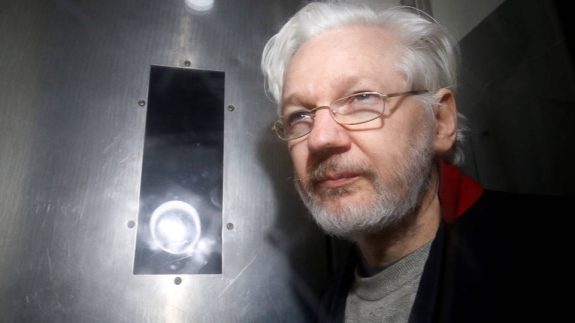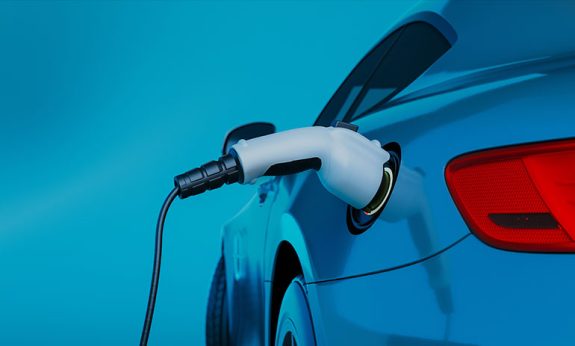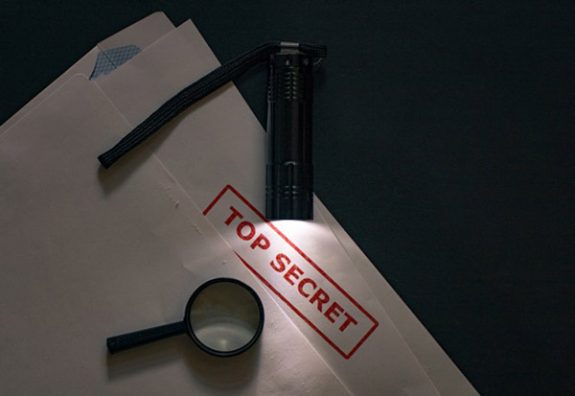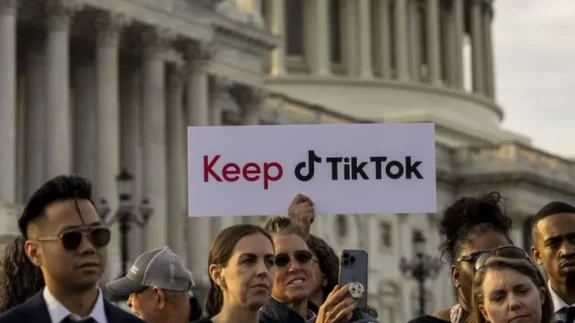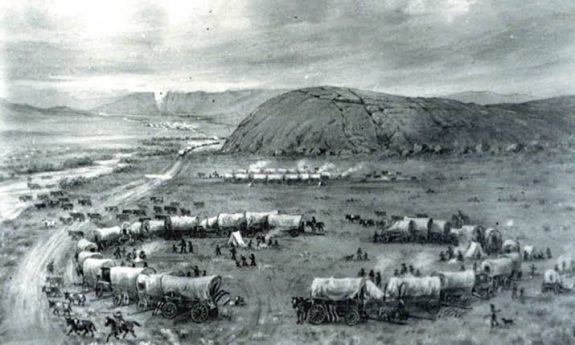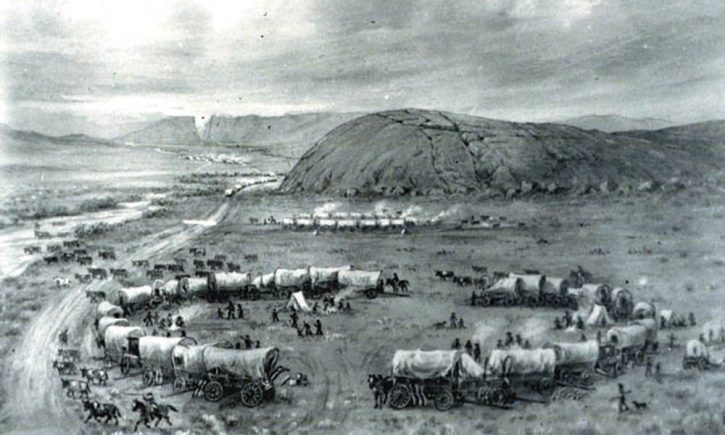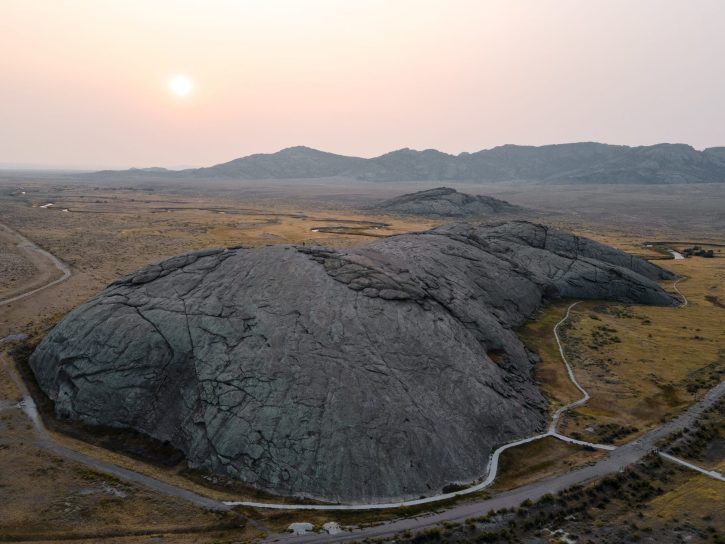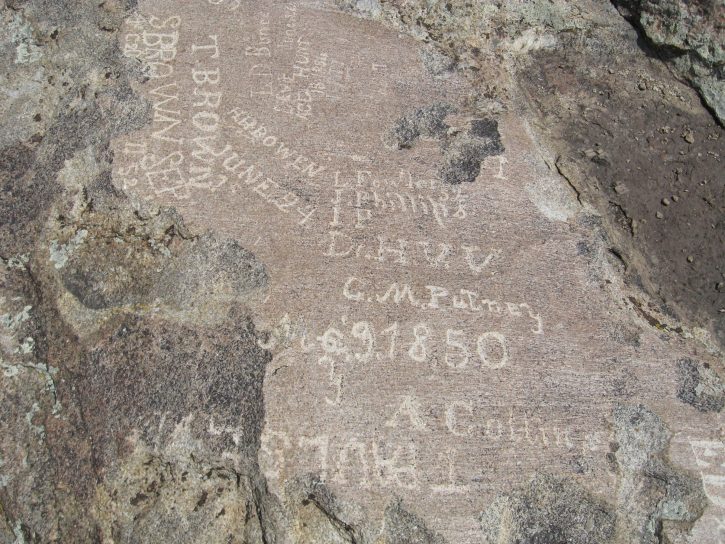By James Moore
There are only 1500 people living in Brooklyn, Iowa, situated along the old transcontinental route of U.S. Highway 6 and north of Interstate 80, east of Des Moines. Calling itself a “community of flags,” Brooklyn does not have a profile that might suggest violent crime. Mollie Tibbetts certainly would have had no fear when she went out for a jog on the humid summer evening of July 18, 2018. The University of Iowa student and former cross country runner for her high school, she had been watching dogs while staying at her boyfriend’s brother’s house. Mollie Tibbetts did not return from her run.
Her body was not discovered until a month later in a nearby cornfield. She had been stabbed nine times, including once in the head, and was covered with cornstalks. A reward fund for information on her whereabouts had quickly grown to $400,000 but a surveillance video turned up evidence that led to an undocumented worker named Cristhian Bahena Rivera.
Prior to the arrest, Vice President Mike Pence met with Tibbetts’ family during an event in Des Moines and publicly said, “I just want Mollie’s family to know: You’re on the hearts of every American.” Pence was not publicly heard from subsequent to the discovery of Mollies’ body or the reporting that her killer had been in the country illegally and working on farms in Iowa.

Mollie Tibbetts
As her disappearance became a national story, Mollie Tibbetts’ family had to suffer her persona being dragged through the political grinder as a victim of a mismanaged border that enabled Rivera’s entry into the U.S. The Trump administration, determined to take advantage of the tragedy, saw a “political gold mine” in the young woman’s slaying. In fact, Trump incited a rally in West Virginia on immigration after learning Tibbetts’ killer was an undocumented worker. While he called national immigration laws a disgrace, he made no mention of crimes committed by his former campaign manager Paul Manafort or his political fixer Michael Cohen. Manafort had been convicted that day and Cohen had entered a guilty plea just hours earlier.
Even members of Tibbetts’ family pushed back against demonizing all immigrants through the actions of a few. Her aunt pointed out that “evil comes in all colors,” and even the libertarian Cato Institute resisted Republican efforts to make the victim’s life a touchstone for political goals on immigration. “This terrible murder is already feeding into a political firestorm,” the Cato Institute’s Alex Nowrasteh wrote. “People with a political axe to grind, those who want to distract from the recent conviction of Paul Manafort and plea deal for Michael Cohen, want to convict all illegal immigrants of this murder in the court of public opinion, not just the actual murderer.”
Trump was not just distracting from the crimes of his administration that were reported that day, but he was seeking more public support for his border wall fantasy. Mexico’s refusal to pay for it and the resultant cost in billions for American taxpayers was a consistent reminder that, while in office, he was busily breaking another campaign promise regarding immigration. In fact, Trump’s hundreds of executive orders on the issue, according to the Migration Policy Institute, were not even remotely close to the impact he had predicted on immigration, and he was concluding his term of office with little to show as an accomplishment.
“But as the Trump tenure nears its end, analysis of immigration data shows that, despite public perception to the contrary, the administration’s policies have not led to a marked drop in the number of permanent immigrants, temporary foreign workers, international students, and those receiving asylum in the United States – at least not yet. In other words, with the exception of refugee admissions, there has not been a dramatic, across-the-board “Trump effect” attributable either to the administration’s policies or rhetoric on immigration levels.”
Out of office, the Trump party does not hesitate to continue turning tragedy to potential political leverage. The family of Laken Riley also regrets the way their daughter’s murder has been used to foment anger over the question of immigration. The 22-year-old nursing student, like Mollie Tibbetts, was out for a jog on campus when she was kidnapped and murdered by an undocumented immigrant. Jose Antonio Ibarra, a Venezuelan who had entered the country illegally near El Paso, had a previous arrest record in New York City, and was also arrested in the Georgia murder through the use of surveillance video. Riley’s name, which has been attached to a 2024 immigration bill, has become another flashpoint on the issue as Trump’s followers use her as an example of Biden’s failures on the border. Her father, Jason Riley, told NBC that he regrets the posturing to help the Republicans.
“I think it’s being used politically to get those votes,” he said. “It makes me angry. I feel like, you know, they’re just using my daughter’s name for that. And she was much better than that, and she should be raised up for the person that she is. She was an angel.”

Laken Riley
Trump can hardly be expected to perceive his tsunami of hypocrisies and contradictions when nothing exists in his consciousness other than his putative greatness. His crimes, readily apparent to Americans, are, to him, persecutions. Immigrant crime is a horror, he argues; political crime does not exist other than in the form of witch hunts, which, history proves, sometimes find witches. Despite the great sadnesses of the Tibbetts and Riley murders and their stories being used as an immigration whipping post, there has never been any indication that migrant crime is worse than that of naturalized citizens. A study released last year by Ran Abramitzky and Stanford University reveals that first-generation immigrants are not more likely to be incarcerated for crimes than U.S. born citizens, and that has been the case for the past 140 years. In fact, they are 30 percent less likely to be imprisoned than American citizens, and when compared to often unfairly prosecuted Blacks, immigrants are 60 percent less likely to be incarcerated.
“From Henry Cabot Lodge in the late 19th century to Donald Trump, anti-immigration politicians have repeatedly tried to link immigrants to crime, but our research confirms that this is a myth and not based on fact,” Abramitzky, the report’s author said.
Facts tend to have nothing to do with U.S. politics in 2024, however. When the current American president entered the congressional chambers to present his State of the Union message, he was confronted by a Georgia congresswoman wearing a Trump MAGA hat and a tee shirt bearing the command, “Say her name,” a reference to Laken Riley. There are continuing and fumbling attempts to place the blame for Riley’s death at the foot of the president and his policies. The accusers remain oblivious to the fatalities and sustaining harms done by Trump’s policies and his acolytes, who remember only those they consider worth recall. The governor of Texas, Greg Abbott, who hopes to become head of Homeland Security if Trump is reelected, has yet to publicly speak the name of the soldiers or immigrants who have died as a result of his border circus known as Operation Lone Star.
A 20-year-old Texan, Specialist Demtrio Torres, used his service weapon to kill himself in October of 2022. The Texas Military Department took two days to release his name, and Abbott still has not spoken it, nor has he mentioned the four previous suicides, or any of the other accidental deaths. In fact, Abbott refused to even confirm that Torres was deployed to Operation Lone Star, undoubtedly hoping the public might assume he was on some other mission. A total of ten troops have died in the border fiasco and Abbott has offered them only anonymity, not honor. Five of the dead have turned their own hand against themselves and committed suicide. Troops are increasingly overcome with an open-ended deployment that leaves them with no clues as to when they will return to their families, jobs, and normal lives. Those five found another way to end their angst. Regardless, no state flags have ever been lowered to half staff nor has the governor made any graveside appearance to offer respect and comfort to families. Instead, he goes on social media and unabashedly blames President Biden for the death of Laken Riley.
Pfc. Joshua Cortez, meanwhile, was denied a waiver of his involuntary call up, which led to tragedy. Cortez had been offered what he described as a “lifetime job” with one of the nation’s largest insurance companies. According to the Army Times, his senior commander refused to relieve Cortez of his duty, and 36 hours later he was found dead inside of his car in a parking lot in Northwest San Antonio.

Pfc. Joshua Cortez
The first casualty was Sgt. Jose L. De Hoyos, discovered dead by self-inflicted gunshot wound in Laredo. He had been a member of the 949th Brigade Support Battalion’s headquarters company. First Sgt. John Crutcher, meanwhile, had been on a temporary hardship waiver to help his wife deal with a disabled brother who was in a wheelchair. She had undergone surgery and was incapacitated, and Crutcher was seeking an extension on his waiver until the household situation could be stabilized. Overcome when he, too, was denied, the top NCO for B Company, 3rd Battalion, 144th infantry, killed himself. One of the platoon leaders under Crutcher’s command, 1st Lieutenant Charles Williams, was on a pass a month later when his death at home was ruled a suicide. Four guard suicides occurred in an eight-week cluster.

First Sgt. John “Kenny” Crutcher
The other casualties happened when a soldier cleaning a gun had it accidentally discharge and kill a fellow guard member; there was a fatal motorcycle accident in Laredo, a blood clot that killed a service member after a long security posting in a record heat wave, and a drowning when Spc. Bishop Evans jumped into the Rio Grande to save two struggling immigrants. His death was largely a consequence of Abbott’s failure to provide the leadership to properly equip the people he has put at risk. Evans had no flotation device and can fairly be described as a victim of a hastily planned deployment and inexplicably delayed requisitions.
Guardsmen were supposed to be provided with ropes and ring buoys to save people in trouble, and themselves, but the equipment had been delayed and was not yet supplied when Evans, an artilleryman, jumped into the Rio Grande to save two lives. Instead, he drowned, and his body was not recovered until four days later downstream. According to the Army Times, the essential gear for water safety was not requested until 11 months after the launch of Operation Lone Star. Prior to the Evans tragedy, no flotation devices or water rescue training were offered to troops, even though they were put in a position of having to almost daily extract people from the Rio Grande.
Texas troops, however, are not the only souls lost to anonymous death as a consequence of the militarization of the Mexican frontier. Racial profiling by law enforcement along the border prompted high speed chases that killed at least 74 people and injured another 129 during a 29-month period. Just three months ago, Human Rights Watch, using Department of Public Safety Data, released a study that showed unnecessary vehicle chases increased by more than 1000 percent since the launch of Greg Abbott’s border exhibition. The study cited cases involving 7 bystanders becoming fatalities as law officers chased drivers for minor moving violations. One of the dead was 7-year-old Emilia Tambunga, who was with her grandmother, Maria, as they were going out for ice cream. A vehicle being pursued by a Crockett County Sheriff’s deputy ran a red light and rammed into them. Neither Trump nor Abbott have said her name because they either do not know it or do not care.
The situation is likely to get worse. The Abbott and Trump controlled Texas legislature passed a law to give state and local officers the power to arrest illegal immigrants. How to know if someone with brown skin is in the country without proper documents is not clear. Not being White and living on the border, which is more than 90 percent of the population, becomes an even greater liability. In some cases, however, migrants can be charged with felonies, and law enforcement can take them to the border for return to Mexico. The measure abridges the powers of the federal government and the U.S. Customs and Border Patrol, which is empowered by the Constitution to manage immigration and border protection. A legal challenge to the Texas immigration law is being heard in a conservative federal court, and, even though it is abundantly clear Texas has superseded national law, the appeals court has a record of rulings that are compliant with radically conservative thinking. Mexico has said, however, it will not accept any immigrants back to its soil unless they are citizens of Mexico, which will certainly increase international tensions with America’s largest trading partner.
American politicians continue to create more problems than they solve.
This article was originally published on Texas to the world.
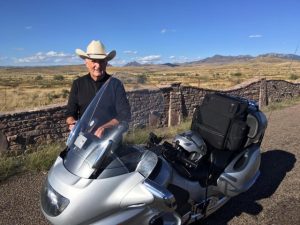
James Moore is the New York Times bestselling author of “Bush’s Brain: How Karl Rove Made George W. Bush Presidential,” three other books on Bush and former Texas Governor Rick Perry, as well as two novels, and a biography entitled, “Give Back the Light,” on a famed eye surgeon and inventor. His newest book will be released mid- 2023. Mr. Moore has been honored with an Emmy from the National Academy of Television Arts and Sciences for his documentary work and is a former TV news correspondent who has traveled extensively on every presidential campaign since 1976.
He has been a retained on-air political analyst for MSNBC and has appeared on Morning Edition on National Public Radio, NBC Nightly News, Last Word with Lawrence O’Donnell, CBS Evening News, CNN, Real Time with Bill Maher, and Hardball with Chris Matthews, among numerous other programs. Mr. Moore’s written political and media analyses have been published at CNN, Boston Globe, L.A. Times, Guardian of London, Sunday Independent of London, Salon, Financial Times of London, Huffington Post, and numerous other outlets. He also appeared as an expert on presidential politics in the highest-grossing documentary film of all time, Fahrenheit 911, (not related to the film’s producer Michael Moore).
His other honors include the Dartmouth College National Media Award for Economic Understanding, the Edward R. Murrow Award from the Radio Television News Directors’ Association, the Individual Broadcast Achievement Award from the Texas Headliners Foundation, and a Gold Medal for Script Writing from the Houston International Film Festival. He was frequently named best reporter in Texas by the AP, UPI, and the Houston Press Club. The film produced from his book “Bush’s Brain” premiered at The Cannes Film Festival prior to a successful 30-city theater run in the U.S.
Mr. Moore has reported on the major stories and historical events of our time, which have ranged from Iran-Contra to the Waco standoff, the Oklahoma City bombing, the border immigration crisis, and other headlining events. His journalism has put him in Cuba, Central America, Mexico, Australia, Canada, the UK, and most of Europe, interviewing figures as diverse as Fidel Castro and Willie Nelson. He has been writing about Texas politics, culture, and history since 1975, and continues with political opinion pieces for CNN and regularly at his Substack newsletter: “Texas to the World.”
Like what we do at The AIMN?
You’ll like it even more knowing that your donation will help us to keep up the good fight.
Chuck in a few bucks and see just how far it goes!
Your contribution to help with the running costs of this site will be gratefully accepted.
You can donate through PayPal or credit card via the button below, or donate via bank transfer: BSB: 062500; A/c no: 10495969














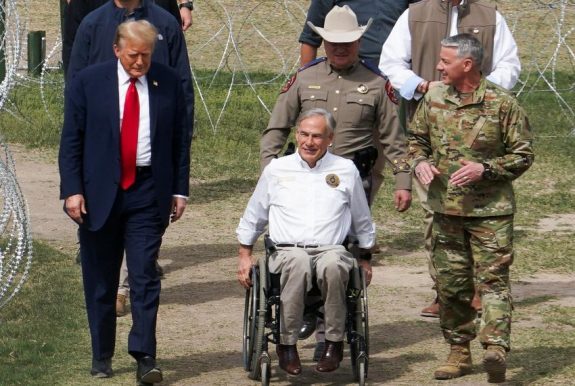





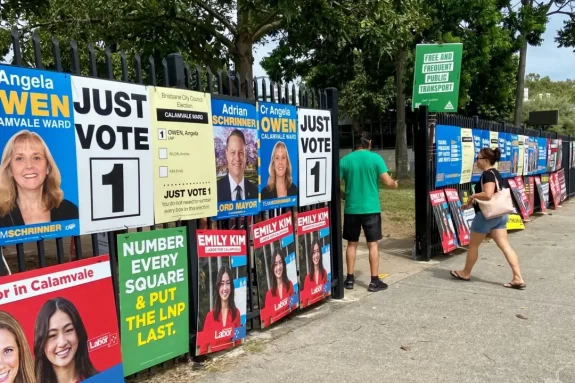
 But the ALP has gained a win in the seat of Calamvale with the election of Emily Kim with 51% of the vote. The ALP also had swings to it in four wards: Runcorn, Northgate, Marchant, and Holland Park. It’s clear that if Labor and the Greens want to govern a future Brisbane City Council (the 5th biggest government in Australia) they inevitably will have to govern together in a coalition like the ALP and Greens have done in Tasmania, and the ACT historically. They will both have to swallow the pill for the greater good. Together both could win back 15 seats if they campaigned on a shared policy platform that appeals to more voters.
But the ALP has gained a win in the seat of Calamvale with the election of Emily Kim with 51% of the vote. The ALP also had swings to it in four wards: Runcorn, Northgate, Marchant, and Holland Park. It’s clear that if Labor and the Greens want to govern a future Brisbane City Council (the 5th biggest government in Australia) they inevitably will have to govern together in a coalition like the ALP and Greens have done in Tasmania, and the ACT historically. They will both have to swallow the pill for the greater good. Together both could win back 15 seats if they campaigned on a shared policy platform that appeals to more voters. 
 Callen Sorensen Karklis, Bachelor of Government and International Relations.
Callen Sorensen Karklis, Bachelor of Government and International Relations.